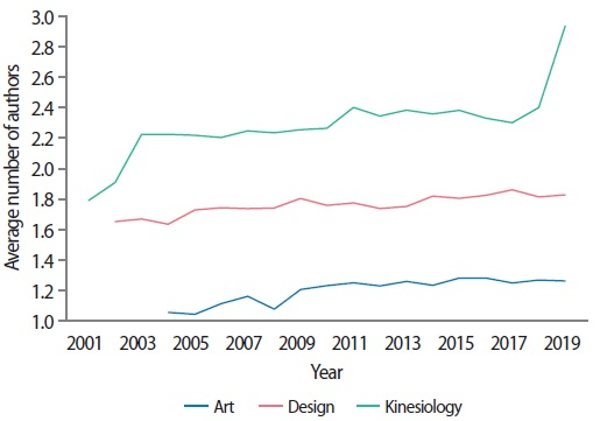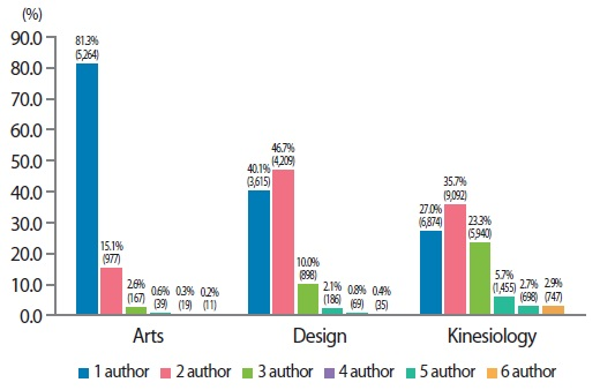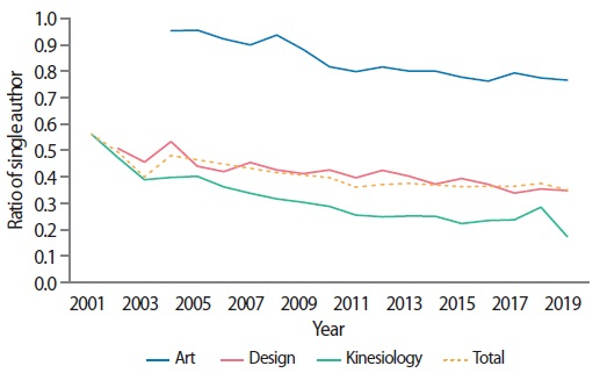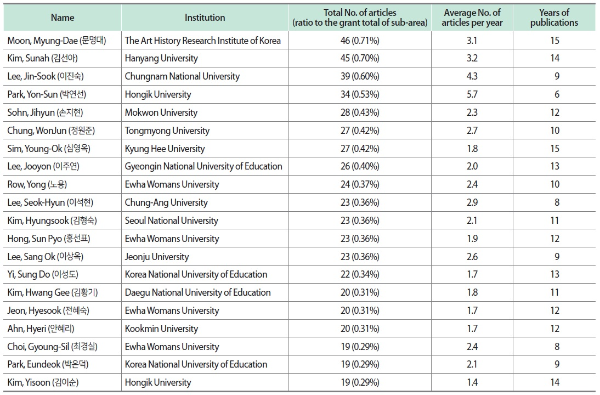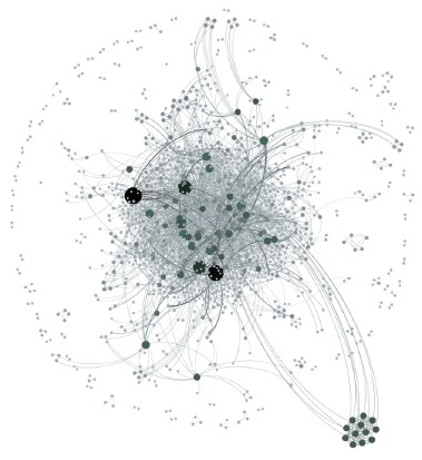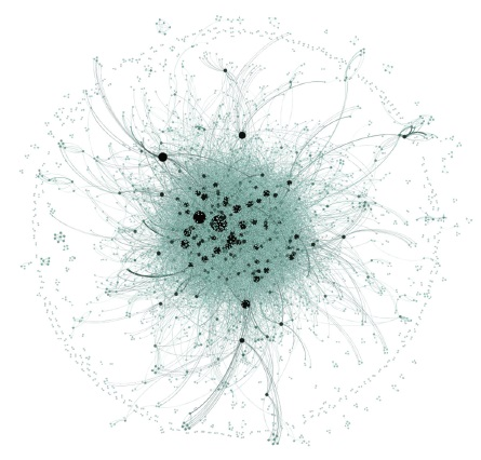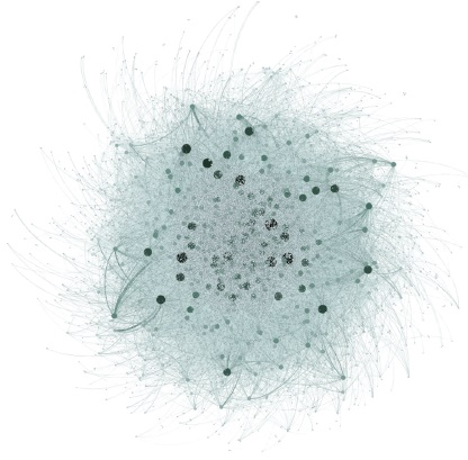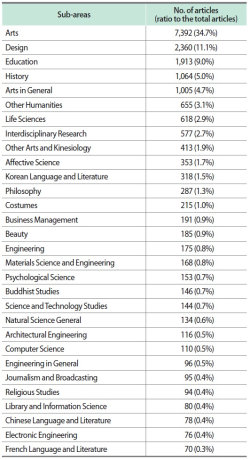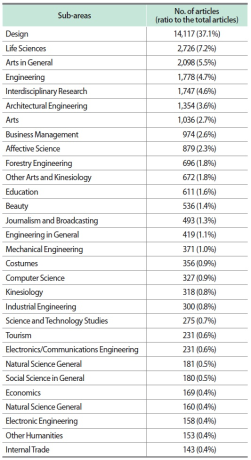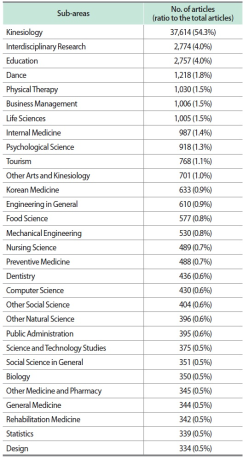JOURNAL OF INFORMATION SCIENCE THEORY AND PRACTICE
- 권한신청
- P-ISSN2287-9099
- E-ISSN2287-4577
- SCOPUS, KCI
Bibliometric Analysis of Korean Journals in Arts and Kinesiology – from the Perspective of Authorship

Abstract
This study aims to describe the general patterns of Korean research in Arts and Kinesiology, particularly from the perspective of authorship. Among the 12 sub-areas of Arts and Kinesiology indexed in the Korean Citation Index (KCI), journals in three sub-areas, “Arts,” “Design,” and “Kinesiology” have the longest publishing histories and produced the largest volume of articles. 68 journals in the “Arts,” “Design,” and “Kinesiology” sub-areas were accredited in the KCI between 2001 and 2019; 40,955 articles which were published in the journals between the years of accreditation and the end of 2019 serve as the context of this article. Authorship, affiliated institutions and countries, openness to new authors, top researchers, topological properties of authorship networks, overall research performance by authors, and co-authorship patterns were analyzed and compared among three sub-subjects.
- keywords
- bibliometric analysis, authorship pattern, arts, design, kinesiology
1. INTRODUCTION
Compared to other disciplines such as medicine, engineering, and natural sciences, the scholarly benefits and impact generated by Arts and Kinesiology research are not always visible or objectively measurable. Often, the research achievements in Arts and Kinesiology are presented not only in articles but also in other diverse and unique formats, such as exhibitions, performances, music scores, and artistic or design displays (Thelwall & Delgado, 2015). Owing to these unique research practices and cultures, relatively less attention has been paid to bibliometric explorations in Arts and Kinesiology research. Specifically, under the current circumstances, where the bibliometric explorations concentrating on authorship patterns of Korean research are rare across all subject areas beyond Arts and Kinesiology, bibliometric analysis of the authorship patterns in Korean research in Arts and Kinesiology is even rarer.
Existing bibliometric studies about the authorship patterns of Korean research include Park and Heo (2017), Lee (2017), Shin (2019), Sun and Jiang (2014), and Yi, Kim, and Jang (2009). Park and Heo (2017) explored the research collaborations of authors in library and information sciences. Based on a network of journals derived from shared authorship among the journals, Lee (2017) established academic communities and analyzed the characteristics of these communities. However, the target discipline was public administration (Lee, 2017), which is unrelated to Arts and Kinesiology. Shin (2019) explored publication trends of Korean early career researchers in the library and information science discipline. Majorly targeting science-related disciplines, Sun and Jiang (2014) explored the international collaboration patterns between Korean and Chinese researchers. Yi et al. (2009) examined the article production and authorship patterns of a Korean research institute, but the disciplinary focus was on medical articles. Both Sun and Jiang’s study and Yi et al. explored authorship patterns of SCI-indexed journals, which are not quite relevant to the scope of the current study.
There are some studies on the publishing patterns of Korean research in Arts and Kinesiology, such as in beauty (Kim & Hwang, 2014), dance (Hwang, 2011; Hwang & Yang, 2012), theater (Oh, 2015), and music (Choi, 2017). However, the research was not focused on the exploration of authorship and collaboration patterns. They mainly analyzed research productivity, types of articles, keywords, and the chronological trends in the topics being explored in the existing literature. As a few of the rare exceptions, Lee and Chung (2018) examined interdisciplinary collaboration patterns of Korean researchers in all disciplines, including “Arts and Kinesiology.” They suggested that overall collaboration trends have been rising, and the collaborations within the same disciplines tend to be stronger than the collaborations across disciplines (Lee & Chung, 2018). Park (2011) briefly outlined the general authorship patterns for “Music Education,” along with article productions and citations in the research field, over a period of more than 30 years. Ko, Kim, and Min (2014) also explored the author keywords of not only Arts and Kinesiology but also social sciences and humanities. However, their focus was mainly on how to build the conceptual taxonomy of keywords used by the authors (Ko et al., 2014).
The inadequacy of the bibliometric understanding of Arts and Kinesiology is also the same for international research. Even though several studies have examined authorship patterns (Bozeman, Fay, & Slade, 2013; Onodera & Yoshikane, 2015), there are few studies (Al, Şahiner, & Tonta, 2006; Chai & Xiao, 2012; Leydesdorff, Hammarfelt, & Salah, 2011; Thelwall & Delgado, 2015) about bibliometric analyses of international journals relevant to Arts and Humanities. Especially, little research has been conducted to examine the authorship of articles in Arts and Kinesiology. In particular, Ho and Ho (2015) briefly investigated the number of authors in “dance” research using 28,307 articles collected from the Arts and Humanities Citation Index. Chai and Xiao (2012) also explored countries of authors’ affiliations and co-authorship patterns in “design studies” using 429 articles collected from Scopus.
To fill the gap in existing literature, this article emphasizes describing the general patterns of Korean research in Arts and Kinesiology, primarily from the perspective of authorship. Among the 12 sub-areas of Arts and Kinesiology indexed in the Korean Citation Index (KCI), journals in the three sub-areas – “Arts,” “Design,” and “Kinesiology” – were chosen as the context of this study. The reason behind the choice of these sub-areas lies in the fact that these sub-areas have the longest publishing histories and produced the largest volume of articles. The general patterns of authorship and collaboration will be compared among the three sub-areas. The intensity of authorship in journal articles and scholarly practices are known to vary significantly among subject areas or disciplines (Adams, 2013). However, the differences in authorship and scholarly practices in Korean Arts and Kinesiology research are unknown. Therefore, to empirically examine and prove the differences, the current study will address the following questions.
-
1. On average, how many authors wrote an article in each of the sub-areas?
-
2. What was the percentage of sole-authored papers in each sub-area?
-
3. What were the types of author affiliations, and what were the countries of the affiliations?
-
4. How much openness was there to new authors in each subarea?
-
5. Who were the top researchers in each sub-area?
-
6. What topological characteristic does the co-authorship network of each sub-area have?
-
7. What was the overall research productivity of authors in each sub-area?
-
8. Beyond “Arts and Kinesiology,” what were the various research interests of authors in each sub-area?
2. DATA COLLECTION AND THE SCOPE OF THE CURRENT STUDY
The KCI is “the database constructed for information including Korean domestic journals, articles, and references.”1 As its main function, the KCI evaluates the qualitative level of Korean domestic journals. Especially, it defines eight subject areas – Humanities, Social Science, Natural Science, Engineering, Medicine and Pharmacy, Marine Agriculture and Fishery, Arts and Kinesiology, and interdisciplinary studies, and accredits quality journals in each subject area. In Arts and Kinesiology, as of 2019, 125 journals were accredited under 12 sub-areas.2 Table 1 shows the number of journals and publication volumes for each sub-area from the time when each journal was accredited by the KCI until 2019. It demonstrates that “Arts,” “Design,” and “Kinesiology” sub-areas have the longest publication histories and have been the most prolific in research activities compared to the other sub-areas. Thus, 68 journals that were accredited by the KCI from 2001 until 2019 and are pertinent to “Arts,” “Design,” and “Kinesiology” were chosen as target journals of the current study. Then, 40,955 articles published in these journals, and 28,836 distinct authors serve as the context of the current study. Detailed information about the articles (i.e., titles, journals, publication years, and languages) and authorship information (i.e., the list of authors of each article, the flag indicating first author, and the author’s affiliated institutions) was collected automatically via the KCI Open API.3 To examine the authors’ overall research performance and the subject areas of the journals where the authors have published articles, the list of each author’s entire publications indexed in KCI was separately collected for this study.
Table 1.
Volume of annually published articles by sub-areas
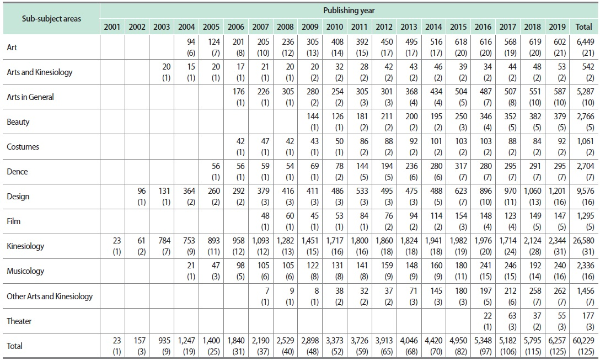
Numbers in parentheses indicate number of journals.
The main purpose of this study is to derive a distinct pattern of authorship and collaboration patterns, depending on the sub-areas. Most of the analyses described in the current article largely target the 68 journals accredited in the KCI. If otherwise, the scope of the analyzed data will be clearly explicated. For this study, the first step was to analyze the author population and the number of authors per article in the three sub-areas. The second step of the analysis dealt with the authors’ affiliated institutions and countries. The third step was to examine the openness towards new authors in the three sub-areas. The top 20 researchers of the three sub-areas were also examined. For each sub-area, network visualizations and the analyses of topological properties of the networks were provided as well. As an extended analysis of the authorship patterns in the three sub-areas, the last two sections describe the investigation of the overall research performance of authors and the interdisciplinary and intertopical collaboration patterns.
3. GENERAL AUTHORSHIP PATTERNS
3.1. Number of Authors
Among the three sub-areas, 3,911 distinct authors published articles in KCI accredited journals in the “Arts” sub-area, and they comprise 8,043 authorships. In the “Design” sub-area, there were 7,889 distinct authors with 16,115 authorships. The “Kinesiology” sub-area had the largest numbers, with 17,387 authors and 58,067 authorships. Hence, the “Kinesiology” sub-area has the largest author population, which was 4.4 times larger than the author population of “Arts” and 2.2 times larger than the author population of “Design.” Considering the different volume of articles published in each sub-area, the largest author population of “Kinesiology,” followed by “Design” and “Arts,” seems to be natural. Moreover, with the increasing volume of articles in the three sub-areas (refer to Table 1), the total number of authors who published articles in the sub-areas naturally increased. Hence, instead of comparing the total authors per sub-area, the average number of authors per article was compared across the sub-areas. Fig. 1 shows the average number of authors per article for each sub-area. To test the statistical significance of the differences, the analysis of variance (ANOVA) test was performed. This test and the subsequent Scheffé pairwise test yielded that the average number of authors per article was different across the sub-areas (F=2601.28, df=2, 40953; p<0.001). The articles in “Kinesiology” were written by more than two authors (M=2.31, σ=1.31) on average. Compared with the other two sub-areas, the “Kinesiology” sub-area also has the largest number of authors per article. Next, the “Arts” sub-area has the smallest number of authors per article, and the articles written by from 1.04 authors to 1.29 authors throughout the years (M=1.24, σ=0.60). The articles in “Design” were written by more than 1.5 authors but less than two authors from 2002 until 2019 (M=1.79, σ=0.83). As the figure depicts, in all sub-areas, the number of authors per article is in an increasing trend as the years pass.
Next, the distribution of the author numbers per article was examined according to the sub-areas, and Fig. 2 shows the result. Among the three sub-areas, the research in “Arts” was conducted mainly by a single researcher. Over 80% of the articles of this sub-area were written by one author. On the other hand, 40% and 27% of the articles in “Design” and “Kinesiology” were sole-authored, respectively. In “Design” and “Kinesiology,” the volume of the articles written by two authors was larger than the articles written by a single author. Additionally, while the “Arts” sub-area has the smallest ratio of articles written by more than three authors (i.e., 1.1%), “Kinesiology” has the largest ratio of articles written by multiple authors (i.e., more than three authors, 11.4%) followed by “Design” (3.2%). Therefore, the research sub-area where the collaborations are the most active among the three sub-areas in our consideration is “Kinesiology.”
To examine the changing collaboration patterns in terms of the number of authors, the ratio of the sole-authored articles to the total number of articles published for each sub-area in each year was examined, as shown in Fig. 3. Again, the “Arts” subarea has the highest ratio of sole-authored articles, but the trend is decreasing. In the early 2000s, the ratio was more than 90% but has reduced to approximately 76% in 2019. The other two sub-areas also demonstrated that the ratio of articles written by one author is decreasing. The trend shows that in the early 2000s, the ratio of single authors was around 40-50% but has recently gone down. In line with the universal research practice patterns of most countries and disciplines (Greene, 2007) and especially coinciding with the rising collaboration trends in the entirety of Korean research (Lee & Chung, 2018), these results described in Figs. 1-3 clearly suggest that the collaborations in Korean research of Arts and Kinesiology are reinforced.
3.2. Authors’ Affiliated Institutions and Countries
We investigated the types of institutions that authors were affiliated with when they published their articles and the countries where the affiliated institutions were located. To that end, two human coders carefully exploited three typical search engines – Google, Wikipedia, and Naver – to find the types of institutions and countries. In this analysis, the institution of an individual authorship was considered for each article, because an author could be affiliated with different institutions for different articles. When two coders agreed on both types of information for a given institution (i.e., both the type of institution and the country), the definition was accepted. Otherwise, the information was re-defined as “Unknown.” This study used the classifications of the institution types defined in Lee and Bak (2016). The ratio of inter-coder agreement was 99.9%. In other words, out of 82,225 authorships for 40,955 articles, the institutions of only 568 authorships could not be defined. Apart from these unknown types, the remaining results of the analyses are presented in Tables 2 and 3.
Table 2 shows that the majority of authors in Korean Arts and Kinesiology research were affiliated to universities or colleges. In “Arts” research, the second most prevalent type of institution fell under “miscellaneous,” followed by research institutions and government agencies. The “miscellaneous” type includes “academic society/professional associations,” “primary and secondary schools,”4 “museums,” and “hospitals.” Among the “miscellaneous” type of institutions in “Arts” research, “museums” and “primary & secondary schools” types were most frequent. In “Design” research, 95% of the authorship was from universities or colleges, followed by businesses. Similarly, 96% of authorship in “Kinesiology” research was affiliated with a university or a college, followed by “research institutions” and “miscellaneous.” Among the “miscellaneous” type of institutions in “Kinesiology” research, “primary & secondary schools” occupied the most frequently affiliated institution types. Therefore, “Kinesiology” research was conducted mainly by academic researchers, whereas “Design” researchers collaborated with researchers with practical skills and industrial experience. “Arts” researchers collaborated with researchers with relatively more diverse experiences compared to the other two sub-areas.
The next analysis is to examine the national affiliations of authors as detailed in Table 3. This table shows that over 95% of the research in Arts and Kinesiology was performed by domestic researchers. In the three sub-areas, 6.0%, 2.8%, and 1.4% were the ratios of internationally affiliated authorships in “Arts,” “Design,” and “Kinesiology,” respectively. In “Arts,” which was the most active sub-area for international research participation among the three sub-areas, the most frequently presented research in Korean journals was by American and Japanese researchers. In “Kinesiology,” which was the least active sub-area of international participations, American and Japanese researchers were also the ones who published their works in Korean journals. In “Design” research, American researchers were the most common international scholars who presented their works in Korean journals, followed by European researchers.
Next, the rate of internationally collaborated articles was examined. There were 1,423 articles written by international authors, and amongst them, 301 articles, 227 articles, and 895 articles were about “Arts,” “Design,” and “Kinesiology,” respectively. Among the 1,423 articles, 1,155 articles were authored by a single international author, and 268 articles (9 articles in “Arts,” 43 articles in “Design,” and 216 articles in “Kinesiology”) were written by international collaborations. Among the 268 articles, authors of 109 articles were from the same international country (6 articles in “Arts,” 27 articles in “Design,” and 76 articles in “Kinesiology”). This means that the authors of these articles did not include Korean authors. The remaining 159 articles were international collaborations (3 articles in “Arts,” 14 articles in “Design,” and 142 articles in “Kinesiology”). Among 159 internationally collaborated articles, Korean researchers participated in 143 articles (2 articles in “Arts,” 7 articles in “Design,” and 134 articles in “Kinesiology”). Among 159 internationally collaborated articles, 140 articles were written by authors affiliated with two countries. 16 articles were authored by researchers of three countries, and three articles were jointly written by authors affiliated with four countries. As an extension of the collaboration pattern analysis in Korean Arts and Kinesiology research, Section 3.7 is devoted to the analysis of interdisciplinary or inter-topical collaboration patterns.
3.3. Openness of Journals in Arts and Kinesiology
The next analysis is to examine the openness or closeness of research in “Arts,” “Design,” and “Kinesiology.” Here, openness refers to the extent to which a given journal or subarea is open to new authors. Cabot, Izquierdo, and Cosentino (2018) assessed the openness of international conferences on “Computer Science” by counting the overlap of authorship over the years of a given conference series. That is, the openness indicates the percentage of new authors who have never published articles to the same conference series. Cabot’s study suggested that the higher the openness of a conference series, 1) the more beneficial it is to increase the research diversity, and 2) it indicates that more researchers were working on the relevant topics. Specifically, Cabot calculated the percentage of new authors who have never presented any paper in a corresponding conference only one time in a certain year. However, the current study calculates the openness of a sub-area every year. Especially, as a modification to Cabot’s calculation, the openness was calculated in each year and for each journal. For a journal of a certain year, first, the number of new authors who did not publish any paper in the corresponding journal in the previous three years was computed. Then, the number was divided by the total number of authors of the journal in the corresponding year. For instance, to compute the openness of the journal titled Korean Journal of Sport Studies in 2015, among 736 distinct authors who published a paper in the journal that year, it was found that 404 authors did not publish any paper in the Korean Journal of Sport Studies from 2012 to 2014. Thus, the journal had a 54.9% openness in 2015. In this way, this study computed the openness for every journal in the “Arts,” “Design,” and “Kinesiology” sub-areas. The average openness of journals in the “Arts,” “Design,” and “Kinesiology” sub-areas are depicted in Fig. 4. Even though the openness in “Arts” research is relatively higher than “Design” and “Kinesiology,” the overall trend of openness is declining. This implies that there are similar groups of authors who have been working on “Arts” related studies and presented their research achievements consistently. However, in “Design” and “Kinesiology” research, it is hard to discover any obvious pattern. From 2007 until 2012, in both sub-areas, the openness in research increased by a small number, but the values decreased since 2013. However, both sub-areas maintain openness in research between 50% and 60%.
3.4. Top Researchers in Three Sub-Areas
The next analysis is to examine the top 20 researchers in each of the three sub-areas. Table 4 lists the top 20 researchers of the “Arts” sub-area. Similarly, Table 5 and Table 6 list the top 20 researchers of the “Design” and “Kinesiology” sub-areas, respectively. The top ranks of these analyses were gauged only by the number of articles published in the journals accredited in the KCI. In the “Arts” sub-area, while one of the top researchers was affiliated with a research association, most of the top researchers were affiliated with universities. Specifically, the institutions that most of the top researchers in the “Arts” sub-area were affiliated with were Ewha Womans University and national universities of education (i.e., either Korea National University of Education, Daegu National University of Education, or Gyeongin National University of Education). In the “Design” sub-area, all the top 20 researchers were affiliated with universities. The institutions that most of the top researchers in “Design” were affiliated with were Hanyang University, Hongik University, Kookmin University, and Konkuk University. All the top 20 researchers in “Kinesiology” were also affiliated with universities. They were mostly affiliated with Dankook University, Kyung Hee University, Pusan National University, and Yonsei University.
In addition, the top researchers of the three sub-areas seem to have different publication tenures. The ranges of the average numbers of a top author’s articles per year were also different according to the sub-areas. Specifically, the average number of articles published by the top 20 authors in “Kinesiology” was larger than the numbers of the other two sub-areas. That is, each sub-area has a different author population (refer to the results of Section 3.1), and authors of each sub-area seem to have different patterns of research productivity. Hence, the following Section 3.5 analyzes and compares the overall research productivities of the authors among the three sub-areas.
3.5. Network Visualizations and Topological Analyses of Co-Authorship Networks
This section explores the social status of authors in each subarea and the authors’ collaborative statuses by introducing the overall collaboration network of each sub-area and analyzing its topological properties. To that end, for each sub-area, a co-authorship network was established as an egocentric network. Because co-authorship relationships do not have an origin and a destination, the network was represented as an undirected network. The edge weights of the network indicated the numbers of co-authored publications between two authors (i.e., nodes) within the corresponding sub-area. First, Fig. 5 depicts the visualization of the collaboration network of “Arts” research. There were 1,710 authors consisting of 1,875 collaboration relationships. The average collaboration degree of the authors was 1.19. That means researchers in the “Arts” sub-area had collaborated with 1.19 authors together on average (Guan, Yan, & Zhang, 2017). The next visualization is Fig. 6, which is the collaboration network of “Design” research. The network consists of 6,688 authors, and they formed 7,994 collaboration relationships. The average collaboration degree of the “Design” researchers is 1.39 authors; researchers in “Design” sub-area had written articles with 1.39 co-authors on average. Coinciding with the results of Section 3.1, the visualization and collaboration degrees display that the tendency of collaborations in “Design” research is higher than in “Arts” research. The tendency of collaborations in “Kinesiology” is even higher than for “Arts” and “Design.” Fig. 7 depicts the more intense collaborations among “Kinesiology” resesearchers. 16,412 researchers in “Kinesiology” formed 42,169 collaboration relationships. The average collaboration degree of “Kinesiology” researchers was 4.14; the “Kinesiology” researchers had collaborated with 4.12 researchers.
In order to conduct more detailed comparison of researchers’ social status among three sub-areas, this paper measured four topological properties for each author: collaboration degree, ‘betweenness’ centrality, eigenvector centrality, and clustering coefficient. Then, a separate ANOVA test of each topological property was executed. The test yielded that the average collaboration degree was significantly different among three sub-areas (F=473.46, df=2, 24808; p<0.001). As explained above, the collaboration degree of an author shows how many coauthors he/she had worked with to write articles, and authors in “Kinesiology” have the highest collaboration degree on average among three sub-areas. According to the Scheffé pairwise test, between “Arts” and “Design,” there is no statistically significant difference in the collaboration degrees. However, the collaboration degrees of “Kinesiology” authors were higher than the other two sub-areas with a statistical significance. Hence, “Arts” and “Design” researchers tended to collaborate with about two colleagues and “Kinesiology” researchers collaborated with more than twice as many colleagues than for the other two sub-areas.
Second, the ‘betweenness’ centrality determines how many times a given author falls on the shortest paths between the other pairs of co-authors. If an author with a high betweenness centrality was removed from the network, the paths between other pairs of co-authors would become longer. Hence, the betweenness centrality indicates how much the given scholar can control information flows in his/her collaboration network (Monge & Contractor, 2003, p. 57). The results of ANOVA test showed that the differences of the betweenness centrality were significantly different among three sub-areas (F=24.91, df=2, 24808; p<0.001). According to the result of the Scheffé pairwise test, the betweenness centrality of “Arts” authors (M=1.22×10-5, σ=1.0×10-4) were significantly lower than for the authors of the other two sub-areas, while there was not significant difference of the centrality between “Design” (M=2.02×10-4, σ=1.66×10-3) and “Kinesiology” (M=2.28×10-4, σ=1.03×10-3). In line with the much higher ratio of single authored articles in “Arts” research (refer to Section 3.2), authors in “Arts” played much weaker information broker roles in their co-authorship networks. On the other hand, authors in “Design” and “Kinesiology” maintained the similar levels of information brokers’ roles in their network. Even though the target authors were highly acclaimed scholars in interdisciplinary research areas, compared with the betweenness centrality values of international scholars ranging from 0.10 to 0.007 (Leydesdorff, 2007), the extent of information brokerage roles of Korean researchers in domestic research is still too trivial.
The next property is eigenvector centrality, which aims to determine the relative importance of a given author in his/her co-author network (Fischbach, Putzke, & Schoder, 2011). The underlying assumption of this social property is that important authors are likely to collaborate with other important researchers. The algorithm iteratively calculated the importance of a given author by counting not only the number of collaboration connections between a target author and other researchers, but also the importance of the collaborators. In this respect, high eigenvector centrality scores cover both the case when an author has collaborated with many authors and the case when the author has collaborated with important researchers (Rodrigues, 2019). The results of ANOVA test showed that the differences of the eigenvector centrality were significantly different among three sub-areas (F=15.67, df=2, 24808; p<0.001). Interestingly, the Scheffé pairwise test yielded that the eigenvector centrality values of authors in “Arts” research were the highest followed by the authors in “Kinesiology.” The authors in “Design” yielded the lowest eigenvector centrality among three sub-areas. These results demonstrated that, while most authors in “Arts” research tend to work alone, the remaining authors in “Arts” research who enjoyed collaborations had diligently collaborated with other important co-authors. Fig. 5 also depicts a similar pattern; there are a few large sub-networks of collaborations, and the authors consisting of the sub-networks are distinctively more important than are the other authors. Meanwhile, Fig. 6 and Fig. 7 show a much larger number of sub-networks of collaborations than does the collaboration network of “Arts” research, and the sub-networks do not necessarily consist of important authors.
The last property is the clustering coefficient, which suggests the strength of an author’s local connections in the co-authorship network. The clustering coefficient counts the existing triangles of coauthors out of all possible triangles. That is, it computes the probability that two co-authors of a given author have actually written a paper together (Newman, 2004). The results of ANOVA test showed that the differences of the clustering coefficient were significantly different among three sub-areas (F=914.87, df=2, 24808; p<0.001). According to the Scheffé pairwise test, the clustering coefficient of “Kinesiology” sub-area (M=0.58, σ=0.44) was significantly higher than “Arts” (M=0.31, σ=0.45) and “Design” sub-areas (M=0.33, σ=0.45), and between “Arts” and “Design” there is no statistically significant difference. That is, co-authors of a researcher in “Kinesiology” are more likely to work together to write papers, compared to the other two sub-areas.
3.6. Overall Research Productivity of Authors in Arts and Kinesiology
As an extended analysis of the authorship, this section investigates and compares the overall research productivity of authors in the three sub-areas. To that end, the whole list of each author’s publication history was collected from the KCI. The collected information included the titles of the articles, published years, and published journals. The collected journals contained not only the journals that were accredited and indexed in the KCI and examined by the above analyses, but also other journals that were indexed but not accredited in the KCI. Moreover, some authors published articles beyond the three sub-areas. Thus, the subject classifications of the journals where an author published articles were also collected from the KCI database. Therefore, the collected journal information also contained information about the other subject areas defined in the KCI. Using this collected information, the current study performed a comparison of authors’ research productivity across the three sub-areas in this section and the interdisciplinary and intertopical collaboration patterns in the next section.
To analyze the research productivity of authors within each of the three sub-areas, the articles published in the journals of the corresponding sub-area were selectively chosen for the authors in each sub-area. For instance, assume that an author published two articles in KCI-accredited journals in “Arts” and published a total of ten articles in his or her publication tenure (until 2019). Considering that five articles out of the ten articles were presented in the journals of “Arts” subject area, the five articles, including both two articles of KCI-accredited journals and three articles of non KCI-accredited journals, were taken into account as the author’s publications of the corresponding “Arts” subarea. Then, for each author, the number of years when his/her publications were published and the average number of his/her publications per year were computed.
The number of publication years and the average number of articles per year were compared across the three sub-areas using ANOVA tests. Both the ANOVA tests for the number of publication years and the average number of articles yielded statistically significant differences across the three sub-areas (F=157.86, p<0.001 for the number of publication years; F=101.77, p<0.001 for the average number of articles per year). Specifically, authors in the “Arts” sub-area published roughly 1.21 articles on average for 1.87 years, and the authors in the “Design” sub-area published about 1.28 articles on average for 1.94 years. The average number of articles published by the authors in “Kinesiology” was 1.37 in each year out of 2.47 years. According to the Scheffé pair-wise test, the number of publication years of “Arts” authors was comparable to the number of years of “Design” authors’ publications without any significant difference. On the other hand, the number of publication years of “Kinesiology” authors was significantly higher than for the other two sub-areas. The average number of publications written by authors in “Arts” was significantly lower than the numbers of both the “Design” and “Kinesiology” sub-areas. The average number of publications written by authors in “Kinesiology” was significantly higher than the number of the other two sub-areas.
These results indicate that, even in journals that were both in and out of KCI accreditation, the authors of “Kinesiology” were the most prolific in their research productivity and have the longest publication tenures. These values were followed by the “Design” and “Arts” sub-areas.
3.7. Various Research Interests of Researchers in “Arts and Kinesiology”
The analysis of this section aims to explore authors’ various research interests beyond “Arts and Kinesiology” in order to figure out disciplines and sub-areas that are closely relevant to “Arts and Kinesiology” research. Specifically, the other subject areas or sub-areas where the articles of an author have been published were examined. To that end, every author’s whole publications and subject areas and sub-areas for the published journals were collected and used, as described in Section 3.6. Subsequently, the sub-areas of these journals where the author has published articles and the frequency of publications were examined. Tables 7-9 present the results for “Arts,” “Design,” and “Kinesiology,” respectively. Specifically, these tables display the top 30 sub-areas where the authors published their articles most frequently, and the percentages in the parentheses represent the ratio of the article numbers in the corresponding sub-areas to the total number of publications published by the authors in each of the three sub-areas. For the three sub-areas, note that the researchers most frequently published articles to the same corresponding sub-areas. That is, the researchers of “Arts” published the most articles to the journals of “Arts,” and the researchers of “Kinesiology,” most frequently published articles to the journals of “Kinesiology.”
In the “Arts” sub-area, among the 98 sub-areas where researchers of “Arts” had published articles, the most frequent sub-areas where researchers published articles were “Design,” “Education,” “History,” and “Arts in General.” Thus, topics about arts and design, arts education, and arts history seem to have earned intense scholarly attention from “Arts” researchers and are often authored by inter-topical collaborations. The “Arts” sub-area also brought active research on assorted topics of science and engineering, including “Life Sciences,” “Affective Science,” “Architectural Engineering,” and “Materials Science and Engineering.” Topics about the humanities, such as “History,” “Languages and Literature,” “Philosophy,” “Psychological Science,” “Buddhist Studies/Religious Studies,” and “Journalism and Broadcasting” were also the sub-areas having active “Arts” research.
In “Design” research, which published articles in 104 sub-areas, again, “Design” was the most frequent sub-area, followed by “Life Sciences,” “Arts in General,” “Engineering,” and “Interdisciplinary Research.” This result coincides with the results of the “Arts” subarea where researchers published articles not only in “Arts” but also in “Design”; the researchers of the “Design” sub-area also frequently published their articles in “Arts in General” or “Arts.” Besides this, similar to “Arts” research, other sub-areas in Arts and Kinesiology that “Design” researchers often worked on were “Beauty” and “Costumes.” On the other hand, the difference between “Design” and “Arts” research was that the former paid scholarly attention to various topics about natural science and engineering; among the top 30 sub-areas listed in Table 8, 11 sub-areas belong to topics pursuing scientific or engineering research practices (e.g., ‘Life Sciences,’ ‘Engineering,’ ‘Architectural Engineering,’ ‘Affective Science,’ ‘Engineering,’ ‘Forestry Engineering,’ ‘Mechanical/Electronic Engineering,’ ‘Computer Science,’ ‘Communications Engineering,’ etc.).
Last, researchers in the “Kinesiology” sub-area published articles most often in journals of the same sub-area. Among 108 sub-areas where “Kinesiology” researchers had published their articles, “Interdisciplinary Research,” “Education,” “Dance,” and “Physical Therapy” were the next most frequently studied sub-areas. Especially, the “Education” topic was included in the top 30 sub-areas in each of “Arts,” “Design,” and “Kinesiology.” Among the 12 sub-areas in Arts and Kinesiology, not only “Dance” and “Other Arts and Kinesiology,” but also “Design” were sub-areas relevant to “Kinesiology.” Unlike the “Arts” and “Design” sub-areas, however, the other sub-areas where “Kinesiology” researchers mainly published their articles were under “Medicine and Pharmacy”; among the 30 sub-areas, 14 sub-areas were pertinent to medical research practices including “Physical Therapy,” “Internal Medicine,” “Life Sciences,” “Korean Medicine,” “Food Science,” “Nursing Science,” “Preventive Medicine,” “Dentistry,” “General Medicine,” “Rehabilitation Medicine,” “Biology,” and “Other Medicine and Pharmacy.” “Kinesiology” research was also relevant to social sciences such as “Education,” “Psychological Sciences,” and “Social Science in General.” However, the collaborations with engineering-related topics were relatively fewer than in the “Design” sub-area.
4. CONCLUSION AND DISCUSSION
In light of the dearth of bibliometric studies of Korean research in Arts and Kinesiology, this study aims to derive the distinct patterns of authorship and collaboration among three sub-areas – “Arts,” “Design,” and “Kinesiology.” This is one of the few attempts to focus on the authorship characteristics and collaboration patterns of Korean domestic research. This is also one of only a few studies to expand prior research to “Arts and Kinesiology” subject area, which is under-explored territory of bibliometric study. Thus, this study contributes to a better understanding as to various properties of authors in Korean “Arts and Kinesiology” research. The implication of this study is in respect of the fact that scholarly differences need to be considered in making relevant research policies, research evaluation criteria, or promoting research collaborations (Lee, 2019).
Based on approximately 41,000 articles and 29,000 authors of 68 journals, the first analysis of the number of authors per article showed that the “Kinesiology” sub-area has the largest number of author publications, and each article of “Kinesiology” was written by the largest number of authors on average. The same analysis showed that the “Arts” sub-area had the smallest number of author publications and the lowest average of author count per article. The analysis of the number of authors per article also showed that the ratios of sole-authored articles have a downward trend in all three sub-areas. Coinciding with the overall trends of both Korean and international research where the collaborations within disciplines and across disciplines are rising (Greene, 2007; Lee & Chung, 2018), these results showed that the collaborative cultures of authorship in Korean “Arts and Kinesiology” research are also reinforced.
In terms of the authors’ major affiliations, for all of the three sub-areas, more than 85% of the authors were affiliated with universities and colleges. Additionally, over 95% of the authors were domestic authors. However, the “Arts” sub-area had the highest number of authors who were not affiliated with universities and colleges. Particularly, a few top researchers in the “Arts” sub-area were also affiliated with outside universities and colleges. This sub-area was also more open to new authors than were the other two sub-areas, by approximately 70-85%. According to the analyses of social properties of authors, in line with the analyses of collaboration patterns, while the majority of authors in “Arts” research tend to work alone, the other authors in “Arts” who enjoyed collaborations consistently co-authored with relatively important authors. Besides this, international participations were active in Korean “Arts” research compared with the other two sub-areas.
In the “Design” sub-area, the majority of authors’ affiliations were universities and colleges. Moreover, among the three sub-areas, “Design” research had the highest rate of domestic author participations and had the lowest international collaborations. According to the analysis about authorship in “Design” research, while the authors of the sub-area collaborated more often than did the researchers of “Arts,” the scholarly importance of the collaborators are not high. The collaborators of “Design” authors also did not form tightened sub-groups. That is, the co-authors of the researchers in “Design” did not work together. On the other hand, the researchers in “Kinesiology,” who were majorly affiliated in universities and colleges, collaborated the most actively, and their co-authors have a tendency to collaborate with each other as well. Hence, “Kinesiology” researchers formed more tightened collaboration sub-groups than for “Arts” and “Design” research. The openness of both “Design” research and “Kinesiology” research was approximately 50-60% of the authorship.
In the analysis based on the authors’ complete publication lists, this study found that the authors of “Kinesiology” were the most prolific and had the longest publication tenures, followed by those of “Design” and “Arts.” The authors of the three sub-areas participated most actively in research in their corresponding sub-areas and also worked on interdisciplinary and inter-topical research. For instance, “Education” was one of the top topics studied by authors in all three sub-areas. Authors of the “Arts” and “Design” sub-areas often studied each other’s sub-area. However, the only difference between the “Arts” and “Design” sub-areas was that the authors in the “Arts” sub-area have worked on a variety of disciplines and topics, whereas the authors in the “Design” sub-area chiefly explored topics relevant to natural science and engineering, such as “Life Sciences,” “Engineering,” “Architectural/Civil Engineering,” and “Affective Science.” Authors in “Kinesiology” studied sub-areas requiring medical research practices as well.
This study also acknowledges its limitations. First, this study did not include the research impact of the author’s articles, which is indicated by citation counts. Hence, a comparative analysis of the citation counts will be conducted in the future. Additionally, a more detailed analysis of the publishing patterns and research practices in Korean research for individual sub-areas will be conducted. The comparative study of authorship patterns in “Arts and Kinesiology” research between Korean research and international research could be meaningful as well.
References
Network centrality: An introduction. In E. E. N. Macau. (Ed.), A mathematical modeling approach from nonlinear dynamics to complex systems () ((2019)) Cham: Springer Rodrigues, F. A. (2019). Network centrality: An introduction. In E. E. N. Macau. (Ed.), A mathematical modeling approach from nonlinear dynamics to complex systems (pp. 177-196). Cham: Springer. , pp. 177-196
- 투고일Submission Date
- 2020-01-26
- 수정일Revised Date
- 게재확정일Accepted Date
- 2020-06-10
- 다운로드 수
- 조회수
- 0KCI 피인용수
- 0WOS 피인용수

